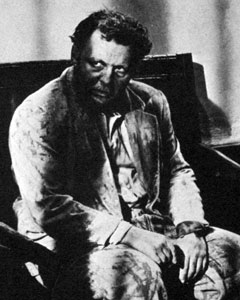
Early detection of certain neurological diseases is a recent, but critical, advance in the nascent field of psycho-neuropharmacology. The reason, in part, is the advent of sophisticated algorithms for the automated design of drugs with specific psychopharmacological effects. The combination of early detection with sophisticated psychopharmacological interventions now makes it possible to delay, or even halt, the progression of neurological diseases that heretofore caused irreversible neurological damage, psychotic symptomatology and, in many cases, death. One particularly spectacular breakthrough in early detection concerns the early diagnosis of rare forms of paranoid schizophrenias. Without treatment, these schizophrenias often lead ineluctably to a life of institutionalization. But, with early detection, the drug haldoperneurol has been shown in clinical trials to retard progression of the disease by up to 80%.

The key breakthrough in early detection was disarmingly simple. In early stages of the disease, sufferers report seeing fleeting dots in simple displays consisting of horizontal and vertical lines, a condition known technically as ahomogenepsy. The behavior of these hallucinated dots is particularly revealing. They occur only at the intersections of the horizontal and vertical lines, and they are quite furtive, never appearing where the sufferer looks, but always lurking in the periphery of the field of view. Whenever the sufferer tries to look at one of the dots directly, it immediately disappears, and new dots appear elsewhere. This furtive behavior of the dots is an early warning of paranoid neurological tendencies. Neuropsychologists theorize that the regular grid of horizontal and vertical lines has a mildly hypnotic effect that overcomes normal repressive psychological defenses, and allows the sufferer's early paranoid tendencies to be revealed in the veiled form of furtive dots. The presence of the dots only at the intersections of lines is interpreted as a veiled representation of the sufferer's desire to hide in the interstices of life.